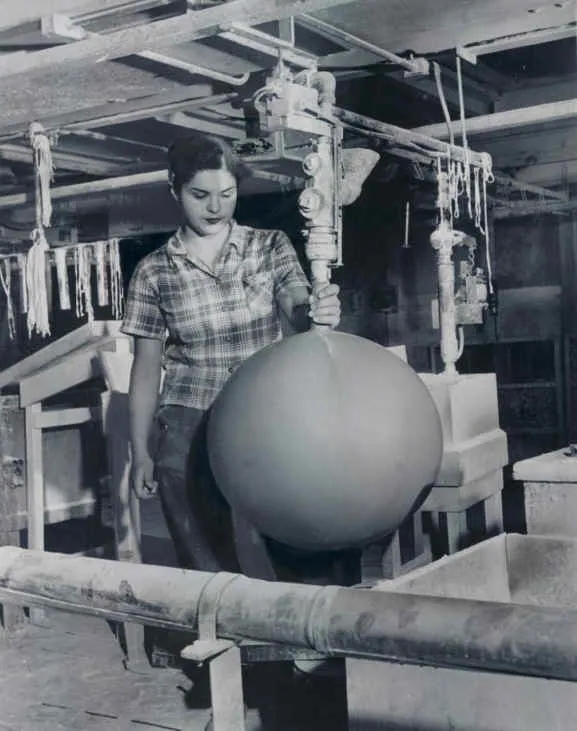Balloons of the Cold War
Operation “Winds of Freedom” used leaflet-filled balloons to fight Communism.
/https://tf-cmsv2-smithsonianmag-media.s3.amazonaws.com/filer/8a/04/8a04a0b3-4364-44d0-8c46-a9b22c5b5396/rfepillowballoons3.jpg)
In 1950, as the cold war was getting under way, 30 top U.S. scientists gathered at M.I.T. to figure out a way to counter Soviet jamming of Voice of America radio broadcasts. The VOA had been broadcasting propaganda to Soviet citizens since 1947, but by late 1949 the USSR was routinely jamming the signal. As part of the State Department's secret “Project Troy,” the scientists convened to come up with a technical means of getting around the radio interference, as well as waging other kinds of political and psychological warfare.
One experimental project, begun in 1951, involved sending hydrogen balloons filled with propaganda leaflets into Czechoslovakia, and later Poland and Hungary. Launched from West Germany inside balloons that either burst or drifted slowly to the ground, the leaflets included slogans like To the people of Czechoslovakia, a new wind is blowing; We are in touch with you daily by radio; and Tyranny cannot control the winds, cannot enslave your hearts.

There were some unexpected consequences to the campaign. A 1955 telegram from the U.S. Embassy in Germany to the State Department noted that Soviet Premier Nikolai Bulganin had told embassy personnel “that in one year one thousand and sixty balloons launched in West Germany had landed in the Soviet Union. We were told these balloons endangered aircraft travelling in international airways. Mind you, there was no complaint about the actual material disseminated; they only stressed the danger of interference with international airways.”
The Soviets shot down some of the balloons with aircraft and anti-aircraft fire, which was of great concern to the State Department and the White House. A January 24, 1956 diary entry by James Hagerty, President Eisenhower’s press secretary, noted that Russian Ambassador Georgi Zaroubin had asked to meet with Eisenhower to deliver a personal message from Bulganin. According to Hagerty’s diary:
[Director for Central Intelligence Allen] Dulles...said the message could be any number of things, but that he and Herbert Hoover, Jr. thought they had a good idea of what it was.... a very strong Soviet protest on our secret “Weather Balloons.”
Hagerty’s diary entry for the next day:
Zaroubin was in the President’s office for fifteen minutes.... When the Ambassador left, the President called for me and I went into his office.... As I walked in, the President said, “Well, Jim, it wasn’t what we thought. There is no mention of the balloons.”
[Allen] Dulles said that he was quite surprised that it had not been balloons but then laughed and said, “Maybe that’s what you get for having somewhat of a guilty conscience.” The President replied that he was sure that the Russians knew about the balloons and that they might bring it up at some later date.
The balloon campaign ended in 1957. (The psywarrior.com site has a detailed history). But the idea of balloon-borne propaganda still crops up, as in this account of a South Korean plan to send helium balloons—filled with money, radios, CDs, and leaflets—over the border into North Korea.

